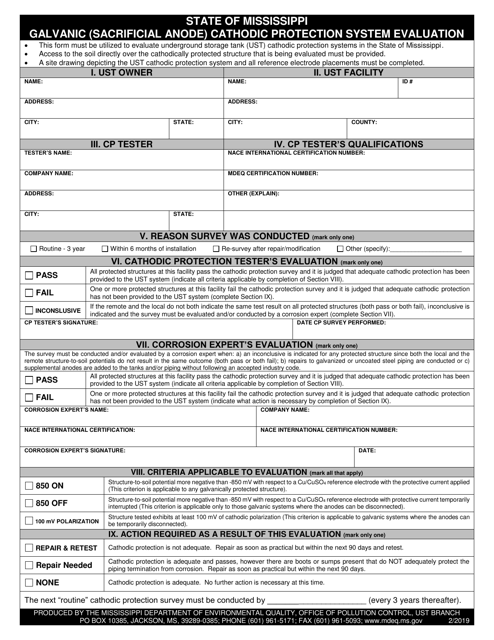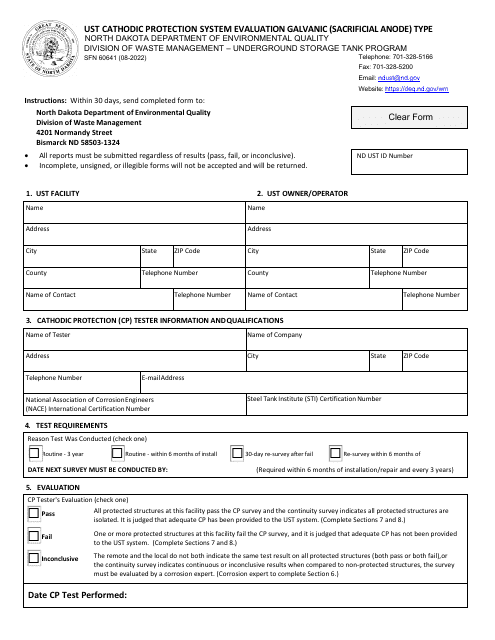Cathodic Protection System Templates
Cathodic Protection System: Ensuring Longevity and Durability
Welcome to our comprehensive guide on Cathodic Protection System, a crucial method to prevent corrosion and extend the lifespan of various structures and infrastructure. Also known as the cathodic protection system, this collection of documents encompasses a range of guidelines, evaluations, and records that help in maintaining an effective corrosion prevention strategy.
Corrosion can cause significant damage to metal structures, pipelines, storage tanks, and underground storage tanks (USTs). It poses a considerable threat to their integrity, safety, and overall functionality. The Cathodic Protection System, through its various forms and evaluations, provides an unparalleled defense against corrosion, ensuring that critical assets remain protected for years to come.
One of the documents included in this collection is the North Carolina Cathodic Protection System Evaluation for Impressed Current Systems (Form UST-7B). This evaluation is designed specifically for impressed current systems and helps to assess their effectiveness. By implementing the recommendations outlined in this evaluation form, industries and infrastructure operators can mitigate corrosion risks and safeguard their assets.
Another valuable document featured in this collection is the Standardized Impressed Current Cathodic Protection Testing Form (Rhode Island). This form provides a standardized approach to testing impressed current cathodic protection systems, allowing for accurate and consistent evaluation across different sites and projects. Implementing this form ensures that the testing process is efficient, reliable, and compliant with industry standards.
In addition, this collection includes the Galvanic Cathodic Protection System Evaluation (Form UST-CP-01) and the Impressed Current Cathodic Protection System Record of Rectifier Operation (Form UST-CP-03) from Louisiana. These documents offer crucial insights into evaluating galvanic and impressed current cathodic protection systems, respectively. By leveraging these evaluations, operators can identify potential issues, optimize system performance, and extend the lifespan of their assets.
We also provide access to Appendix M Impressed Current Cathodic Protection System Evaluation from Alaska. This comprehensive evaluation guide assists in assessing the effectiveness of impressed current cathodic protection systems in extreme environments, such as those encountered in Alaska. By tailoring the evaluation process to specific environmental conditions, this document ensures the long-term viability and performance of cathodic protection systems.
In conclusion, our Cathodic Protection System documents collection, encompasses a diverse range of evaluations, forms, and records designed to maintain an effective corrosion prevention strategy. By implementing the recommendations outlined in these documents, operators can safeguard their critical assets, optimize system performance, and ensure their longevity. Trust in our collection to protect your investments and infrastructure from the damaging effects of corrosion.
Documents:
10
This document is used to keep a log of the operation of a sacrificial anode system for cathodic protection.
This document evaluates the effectiveness of a Galvanic (Sacrificial Anode) Cathodic Protection System in Mississippi.
This form is used for standardized testing of impressed current cathodic protection in Rhode Island. It ensures the proper functioning of cathodic protection systems to prevent corrosion and deterioration of infrastructure.
This form is used for evaluating galvanic cathodic protection systems in Louisiana.
This Form is used for recording the operation of impressed current cathodic protection systems using rectifiers in Louisiana.
This form is used for evaluating impressed current cathodic protection systems in Louisiana.
This document provides guidance and evaluation criteria for the Impressed Current Cathodic Protection System in Alaska. It helps ensure the effectiveness of cathodic protection systems in preventing corrosion.










